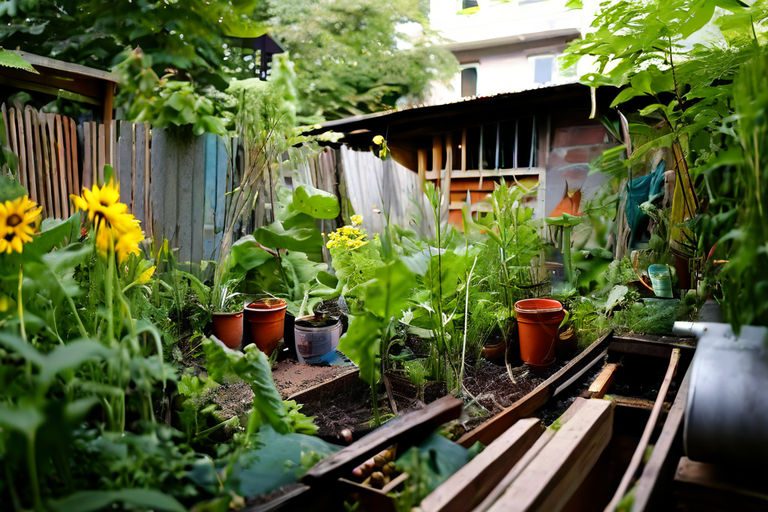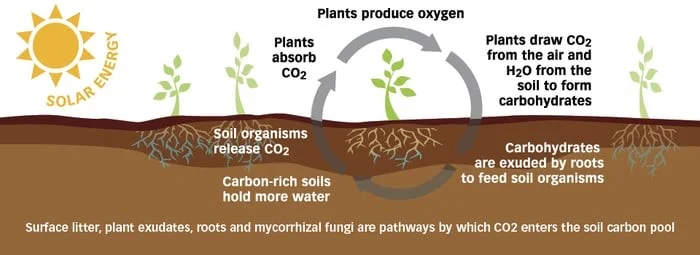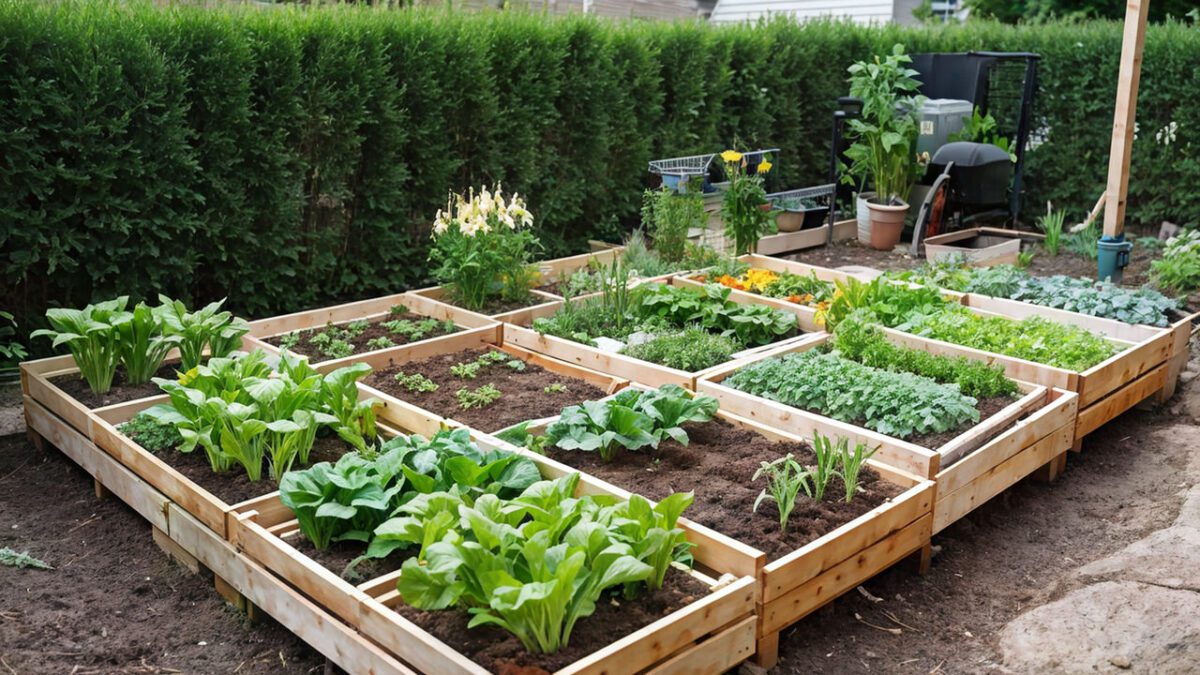
As gardeners, we often focus on the visible aspects of our gardens, from the vibrant flowers to the lush greenery. However, there is a crucial yet often-overlooked component that plays a vital role in our ecosystem: carbon.
Carbon, the fourth most abundant element in the universe, is the backbone of life on Earth, and its cycles are essential for maintaining a healthy and thriving environment. This is how the carbon cycle works:
In this article
The Carbon Cycle

The carbon cycle is the process by which carbon is exchanged between the atmosphere, oceans, land, and living organisms. It is a complex and dynamic process that involves the movement of carbon dioxide (CO2) between these different reservoirs. The carbon cycle is crucial for life on Earth because it allows plants to absorb CO2 from the atmosphere, convert it into organic compounds, and release oxygen as a byproduct. This process is known as photosynthesis.
Carbon Storage in Soil

Soil is a critical component of the carbon cycle, as it acts as a massive carbon sink. Soil contains more carbon than the atmosphere and all living organisms combined.

This carbon is stored in the form of organic matter, such as decomposed plant material, and is released back into the atmosphere through processes like respiration and decomposition.
The Role of Microorganisms

Microorganisms, such as bacteria and fungi, play a vital role in the carbon cycle. Microorganisms are responsible for decomposing dead plants and animals. This process converts complex organic materials into simpler compounds, releasing carbon back into the atmosphere as carbon dioxide (CO₂) and methane (CH₄).
As they decompose organic matter, bacteria and fungi release essential nutrients back into the soil, making them available for plant uptake and promoting overall soil fertility.
Fungi, in particular, contribute to the creation of humus—a stable form of organic matter that can sequester carbon for long periods. This helps maintain soil health and structure.
The biomass of microorganisms themselves contains significant amounts of carbon. As they grow and reproduce, they incorporate carbon into their cellular structures, contributing to soil carbon reserves.
Carbon Sequestration in Plants

Plants are also crucial players in the carbon cycle. During photosynthesis, plants absorb CO₂ from the atmosphere and convert it into organic compounds, primarily sugars. This process not only provides energy for the plant but also forms the basis of the food chain for other organisms. As a byproduct of photosynthesis, plants release oxygen, which is essential for the survival of aerobic life forms.
Carbon is stored in the stems, leaves, and branches of plants. Trees, for example, can sequester substantial amounts of carbon in their wood over decades.
A significant portion of carbon is also stored in plant roots. Deep-rooted perennial plants can store more carbon in the soil compared to annual plants, as their roots penetrate deeper and contribute organic matter to the soil.
When plants die or shed leaves, the organic matter decomposes, contributing to soil organic carbon. Microorganisms in the soil play a crucial role in breaking down this matter and stabilizing carbon in the soil.
Some carbon can remain in the soil for long periods, especially in colder climates where decomposition rates are slower. This creates a long-term carbon sink that can significantly reduce atmospheric CO₂ levels.
The Impact of Human Activities
Human activities, such as deforestation, land degradation, and climate change, have significantly disrupted the carbon cycle. Deforestation, for example, releases stored carbon into the atmosphere, while land degradation reduces the ability of soil to store carbon. When trees are cut down or burned, the carbon stored in their biomass is released as CO₂, significantly contributing to greenhouse gas emissions.
The loss of forests exacerbates climate change by increasing atmospheric CO₂ levels, leading to higher global temperatures and altered weather patterns. Deforestation disrupts habitats, leading to species extinction and reduced biodiversity, which further destabilizes ecosystems.
RELATED: Trees are Nature’s Champions in the Fight Against Climate Change
Practices such as overgrazing and unsustainable agriculture lead to soil erosion, which depletes soil organic matter and reduces its ability to store carbon.
Land degradation can result in desertification, where fertile land becomes increasingly arid, further diminishing its capacity to sequester carbon. Degraded lands often yield lower crop outputs, which can lead to food insecurity and increased pressure on remaining natural ecosystems. Disturbed soils release stored carbon, contributing to higher atmospheric CO₂ levels and further exacerbating climate change.
Human acgivities also influence climate change. Rising global temperatures can enhance decomposition rates in soils, releasing more CO₂ and methane (CH₄) into the atmosphere. This creates a feedback loop where increased greenhouse gases further accelerate climate change.
Climate change affects plant growth patterns, species distributions, and ecosystem services, disrupting the natural balance of the carbon cycle. Increased CO₂ levels lead to ocean acidification, adversely affecting marine ecosystems and their ability to sequester carbon.
Climate change also increases the frequency and intensity of extreme weather events, such as droughts and floods, which can further disrupt carbon storage in both terrestrial and aquatic systems.
How Gardeners Can Promote Carbon Cycles

As gardeners, we can play a crucial role in promoting carbon cycles in our gardens. Here are some ways to do so:
- Use Compost: Composting is an excellent way to promote carbon cycles in your garden. By adding organic matter to your soil, you are creating a habitat for microorganisms to thrive, which helps to break down organic matter and release carbon dioxide back into the atmosphere.
- Plant Carbon-Sequestering Plants: Certain plants, such as trees and perennials, are more effective at sequestering carbon than others. By planting these species in your garden, you can help to remove CO2 from the atmosphere and store it in the soil.
- Maintain Soil Health: Healthy soil is essential for promoting carbon cycles. By using techniques like no-till farming and cover cropping, you can reduce soil disturbance and promote soil biota, which helps to store carbon in the soil.
- Reduce Waste: Reducing waste in your garden can also promote carbon cycles. By composting food waste and yard trimmings, you can reduce the amount of organic matter that ends up in landfills, where it releases methane, a potent greenhouse gas.
RELATED: The Unseen Impact of Garden Fertilizers on Carbon Sequestration
The carbon cycle is a vital process that underpins life on Earth. By understanding and promoting carbon cycles in our gardens, we can play a crucial role in mitigating climate change and maintaining a healthy environment.
YOU MIGHT ALSO LIKE: The True Carbon Cost of Food: Are Home Gardens Really Worse?







